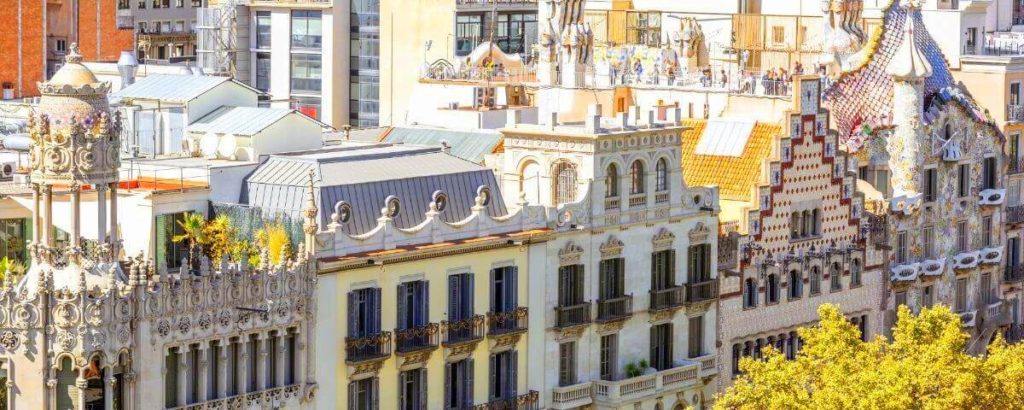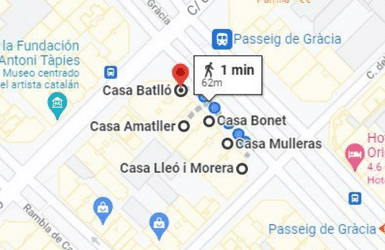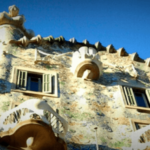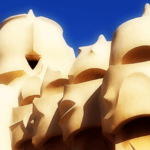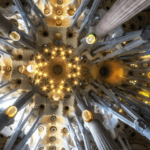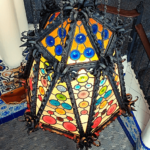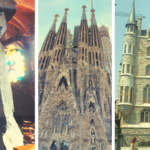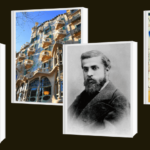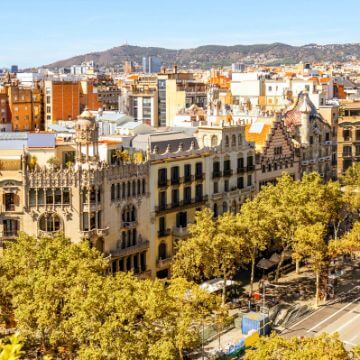
What is La Manzana de la Discordia of Barcelona?
ALL ABOUT BARCELONA BLOCK OF DISCORD
There’s a block in Passeig de Gracia, the main street of Barcelona, that attracts everyone’s attention. It’s the one between Arago and Consell de Cent street, on the odd numbers side.
It’s not famous for its shopping (for that you need to go a couple of blocks further, on the even numbers side between Mallorca and Valencia). It’s not for its restaurants either. It’s its architecture that’s made it famous.
The classic myth of the Apple of Discord
A ancient Greek legend says that Zeus has hosting marriage of King Peleus and the sea nymph Thetis. Everyone was invited to the wedding, except Eris, the goddess of strife and discord (because of course, you don’t want a riot happening during your wedding). However, Eris showed up reading to mess things up. She had a golden apple, with an inscription saying “To the most beautiful one”.
As you can imagine, all the ladies at the wedding wanted to be the one to win this sort of beauty prize! In the end, the story reduces to 3 contestants: Hera (goddess of women and family), Athena (goddess of warfare and handy craft) and Aphrodite (goddess of beauty and love, the Roman Venus).
Zeus refused to take sides, and chose a mortal to decide who would be getting the golden apple. That was Paris, prince of Troy. All three goddesses tempted him with special gifts, trying to bribe him.
But when Aphrodite promised him the most beautiful woman on Earth, Helen of Sparta and Paris gave her the golden apple. This story is known as the Judgment of Paris, and it resulted in the Trojan War (with the Spartans trying to get Helen back).
So what does this have to do with Barcelona?
In the early 1900’s, the best city architects built beautiful projects one next door to the other in a particular block of Passeig de Gracia. The locals found it hard to agree on which was the most beautiful of them. Hence they started calling it the Manzana de la Discordia – the Apple of Discord.
Actually, the word “Manzana” in Spanish translates as both “apple” and “block of buildings”, so it was a perfect fit. Unfortunately this nuance is lost in translation. And 3 were the buildings that stood out: Casa Lleó Morera, Casa Amatller and Casa Batllo – built by the 3 most important architects of the time.
In today’s post I’ll tell you about them as well as the other two buildings in the block, whose beauty pales in front of the other three, but they are still worth mentioning.
All the houses of La Manzana de la Discordia
1
Casa Lleó Morera
ARCHITECT: Domenech i Muntaner.
YEAR OF CONSTRUCTION: 1905
VISITABLE: No (except for the leather shop in the street level).
The widow Francesca Morera decided to make over the Casa Rocamora that she owned in Passeig de Gracia. She hired the architect Lluís Domènech i Muntaner, the leader of the Barcelona Modernism. Unfortunately, she passed away in 1904 and it was his son, Albert Lleó Morera who ultimately moved in.
The house is named after him. And since his last names “Lleo Morera” translate as “Lion Mulberry Tree”, the outside of the building present wing lions as well as mulberry tree leaves and flowers. It also features the latest technologies of the time: a gramophone, electricity, an old camera…
The inside is a feast for the senses, with mosaics, sculptures and stained glasses made by the finest artists of the time. Unfortunately, it’s not open for visits because the building doesn’t comply with the current requirements for public buildings.
The street level is occupied by the high end leather shop Loewe. When it was first opened in the 1980’s they destroyed many original decoration elements, that they tried to recover in recent years. The rest of the building are offices.
2
Casa Mulleras
ARCHITECT: Enric Sagnier
YEAR OF CONSTRUCTION: 1911
VISITABLE: No.
Businessman Ramon Mulleras asked Enric Sagnier, a renowned archicted of the time, to renovate his property on Passeig de Gracia to give it a neoclassic feel. It stands out for its elegant tribune, a large balcony that signals the floor where the owners lived and used to be a symbol of status.
You’ll notice it is the shortest building in the Block of Discord: it seems it was the only one that respected the laws about building height: the other buildings were fined for being higher than they were supposed to be.
3
Casa Bonet
ARCHITECT: Marcel·lí Coquillat
YEAR OF CONSTRUCTION: 1915
VISITABLE: No (except shop and museum in the street level).
Originally built in 1887 by architect Jaume Brossa, in 1915 Ms. Delfina Bonet hired Marcel·lí Coquillat to redo the façade in a neo-baroque style. Nowadays its street level is occupied by the Regia perfume shop, which hides in its back a curious Museum of Perfume.
4
Casa Amatller
ARCHITECT: Josep Puig i Cadafalch
YEAR OF CONSTRUCTION: 1898-1900
VISITABLE: Yes.
More information here >>
The chocolate maker Antoni Amatller hired Josep Puig i Cadafalch, one of the top modernist architects in Barcelona, to build an apartment building inspired in medieval mansions, all decorated with references to the Catalan culture and the interests of the owner.
The only daughter of the owner founded the Institut Amatller d’Art Hispànic to manage her father’s collections and private archive as well as the building, and they continue to manage it. The Amatller chocolate brand was sold to another Catalan family of chocolate makers, the Simon Coll, who have continued the brand. We actually visit their factory in our wine and chocolate tour.
The street level is occupied by an exclusive jewelry, Bagués, whose ancestors, the Masriera, were already high end jewelers in the early 1900’s (the Bagués continue to produce a line of vintage art nouveau designs).
There’s also a chocolate shop and café where you can buy and taste Amatller chocolates or enjoy a light meal or snack in what used to be the kitchen of Casa Amatller.
The main floor is open for visitors, on your own or on guided tours. It’s a gorgeous house museum full of art and historical details, and away from the tourist crowds. Buy your ticket here >>
5
Casa Batllo
ARCHITECT: Antoni Gaudi
YEAR OF CONSTRUCTION: 1904-1906
VISITABLE: Yes.
More information here >>
Businessman Josep Batllo purchased a building from 1877 and hired Antoni Gaudi to refurbish it and add two more floors. The architect completely redid the façade redistributed the floor where the Batllo would live and united the two light shafts to bring more light into the building.
The result is probably the most unique of all the buildings in the Block of Discord, and it is considered Gaudi’s first true masterpiece. Its outside reminds you of waterlilies and carnival masks, but it could also be inspired in the story of Saint George and the dragon. Gaudi never told.
Currently owned by the founders of the lollypop company ChupaChups, the last tenant to inhabit the house passed away in 2021 during the Covid pandemic. An architecture firm occupies one of the apartments.
The building has been open to the public since 2002, the year of the 150 anniversary of Gaudi’s death. Nowadays the visit takes you around the basement, the entrance hall, the main floor where the Batllo lived, the staircase, the attic and the rooftop. Buy your tickets here >>
What is your favorite house of the Manzana de la Discordia?
Marta
MORE BARCELONA TIPS FOR YOU:
SHARE WITH YOUR TRAVEL MATES
RESEARCHING FOR A TRIP IS TIME-CONSUMING…
Need more inspiration?
Our 100% FREE Barcelona Collection will give you everything you need to organize the trip of your lifetime to Barcelona.
BEST INSIDER TIPS FROM THE PROS!


